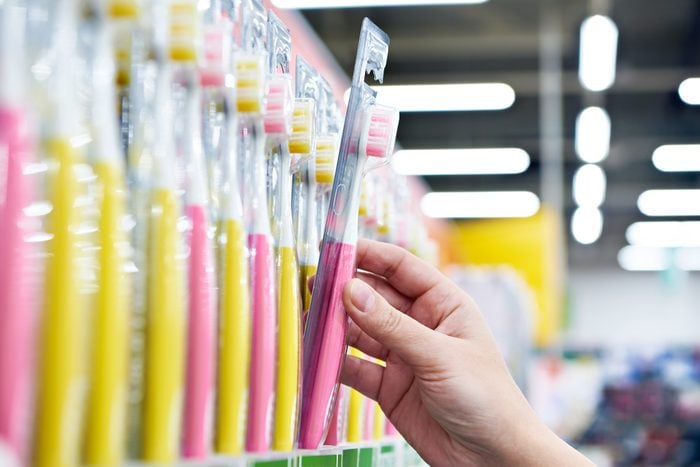
When was the last time you cracked open a new toothbrush? Most of us probably don’t remember. But, according to a November 2022 report from the World Health Organization (WHO), it might be wise to pay closer attention. “Almost half of the world’s population (45% or 3.5 billion people) suffer from oral diseases,” the report states, adding: “Global cases of oral diseases have increased by one billion over the last 30 years—a clear indication that many people do not have access to prevention and treatment of oral diseases.”
So how often should you actually change your toothbrush to protect your teeth?
If you want to stay on the right side of these statistics, the first step is knowing when to replace your toothbrush, and how to care for it in between.
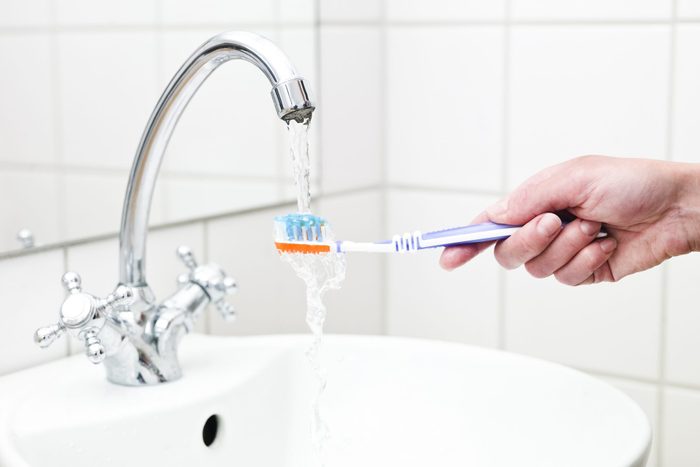
Here’s why you need to change your toothbrush
One of the main reasons to replace your toothbrush is bacterial build-up, says Alison Newgard, DDS, dentist at Columbia Doctors and assistant professor of clinical dentistry at Columbia University Irving Medical Center. “An old toothbrush can harbor bacteria that can cause bad breath, periodontal disease, and dental caries.” (“Dental caries” is the clinical term for “tooth decay” or “cavities.”)
Elizabeth Graves, a registered dental hygienist, adds: “When toothbrush bristles start to break down, they aren’t cleaning the food, plaque, and bacteria as effectively as they should.”
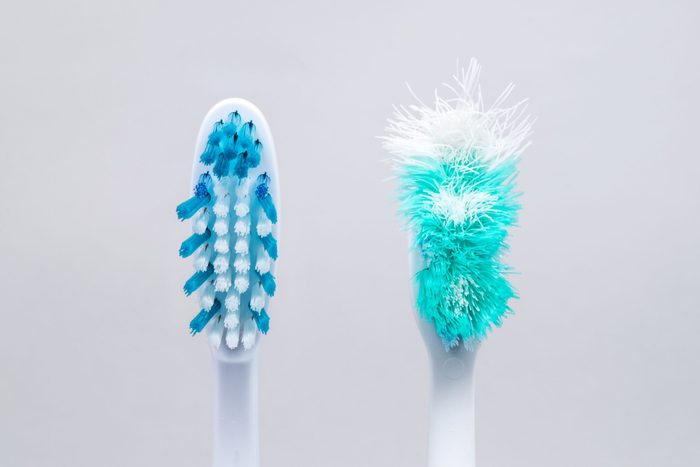
Signs it’s time for a replacement
“Bristles showing dark color changes could be growing a mold, which could lead to oral infections,” says Dr. J. Salim, DMD, founder of Sutton Place Dental Associates in New York City.
In addition, Dr. Hitesh Gupta, DMD and founder of the Smile Factory, says that if the bristles are bent or broken in any way, it’s time to replace your toothbrush. “I recommend this method to my patients: hold your toothbrush up in front of your face, with the bristles facing outwards. If you can see any bristles from the back, they’re bent enough to warrant the purchase of a new toothbrush,” Gupta says.
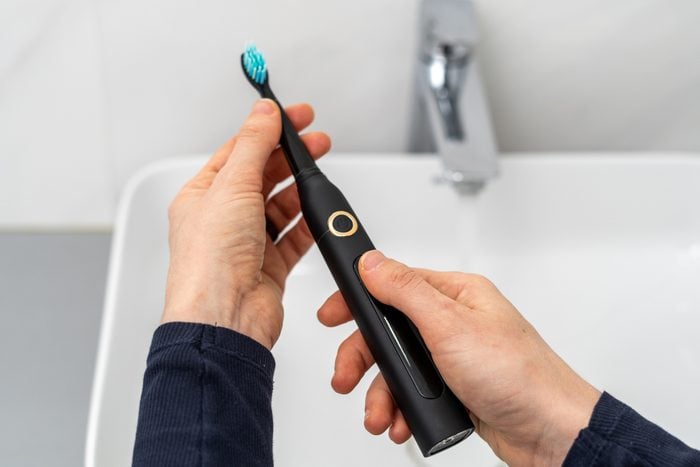
When to change your toothbrush
You should change your toothbrush every three to four months, or when you see signs that your toothbrush is dirty and breaking down. If you’re not a heavy brusher, you might not notice when you need a new toothbrush…and, if you can’t be trusted to remember, you can use a toothbrush like Philips Sonicare’s Rechargeable Electric Toothbrush that alerts you when it’s time to change the brush head.
I Tried Amazon’s Top-Selling Water Flosser—Here Are My Honest Thoughts
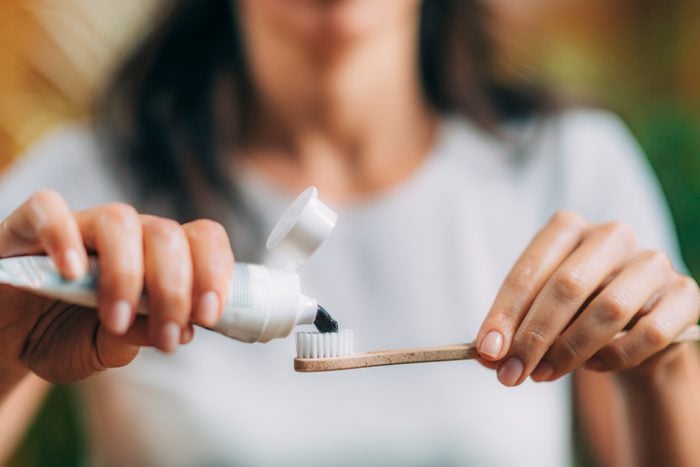
How often should you change your toothbrush?
The American Dental Association recommends changing your toothbrush every three to four months, at minimum. However, Dr. Maria Ryan, DDS, Colgate-Palmolive’s Chief Clinical Officer, says this year is different. “This guidance is even more critical during flu season, and this year in particular with COVID and RSV also circulating at rapid rates,” Dr. Ryan says. “Those who don’t dispose of their toothbrush risk getting sick again.” If you’ve been sick, you should change your toothbrush immediately—and if you have gum disease, you should change your toothbrush every four to six weeks.
“Many families or couples share a toothbrush holder in the bathroom, so if your toothbrush has been close to the toothbrush of someone who has been sick, I recommend replacing it,” says Dr. Newgard.
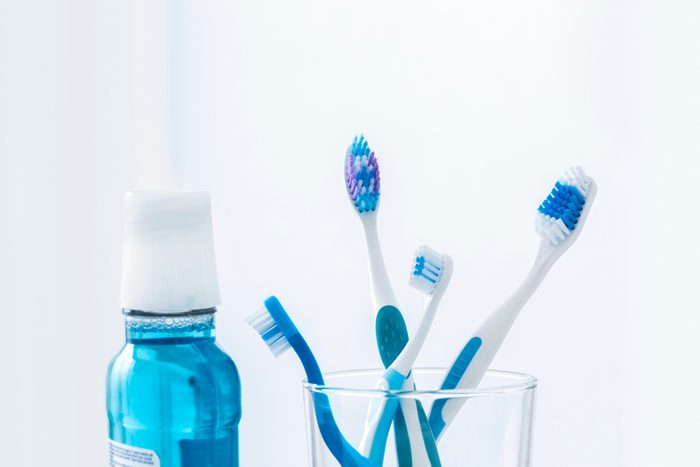
Clever ways to properly care for your toothbrush
“Store your toothbrush in a safe, dry environment to prevent mold,” Graves suggests. “Avoid using toothbrush caps that trap bacteria and moisture. You can use boiling water and let your toothbrush soak for two minutes, occasionally stirring it around, to clean it.”
Leanne Stapf, COO of The Cleaning Authority, recommends cleaning your toothbrush weekly to ensure it’s fresh. “To give it a quick clean and help remove bacteria or germs, simply soak the toothbrush in antibacterial mouthwash or a small cup of hydrogen peroxide,” Stapf says. You might also soak your toothbrush in distilled vinegar, then let it air-dry in an upright position. (Just be sure to give it a really good rinse after the vinegar soak—otherwise, that would be a pungent flavor on your toothbrush!)
Whitney DiFoggio, registered dental hygienist, offers additional methods for keeping your toothbrush clean and bacteria-free. “Antimicrobial mouthwash helps kill germs inside and outside of your mouth, so you can consider leaving the toothbrush head down in a cup of mouthwash for 30 minutes, then setting it up to air dry,” DiFoggio suggests. Another idea? “Effervescent denture cleaner is great for dentures,” she says, “but you can also use it to soak your toothbrush, as well. Let it sit in the cleanser for about half an hour (or whatever the directions say), then rinse it off and allow it to air-dry.”
(Another effective toothbrush-sanitizing method used by our senior editor between brushings is an ultraviolet-lit toothbrush sanitizing case.)

What happens if you don’t change your toothbrush
“As bristles become more fragile and less compact, they become less effective at removing plaque from teeth and gums,” explains Dr. Salim. “Plaque is a sticky film infested with bacteria and food debris. The bacteria degrade organic food debris, producing acidic biochemicals, which can lead to cavities and gum disease.”
Dr. Salim explains that gum disease occurs when certain bacteria around and in between teeth produce harmful biochemicals. “These compounds cause gums to recede, become red, swollen, and to bleed,” Dr. Salim says.
